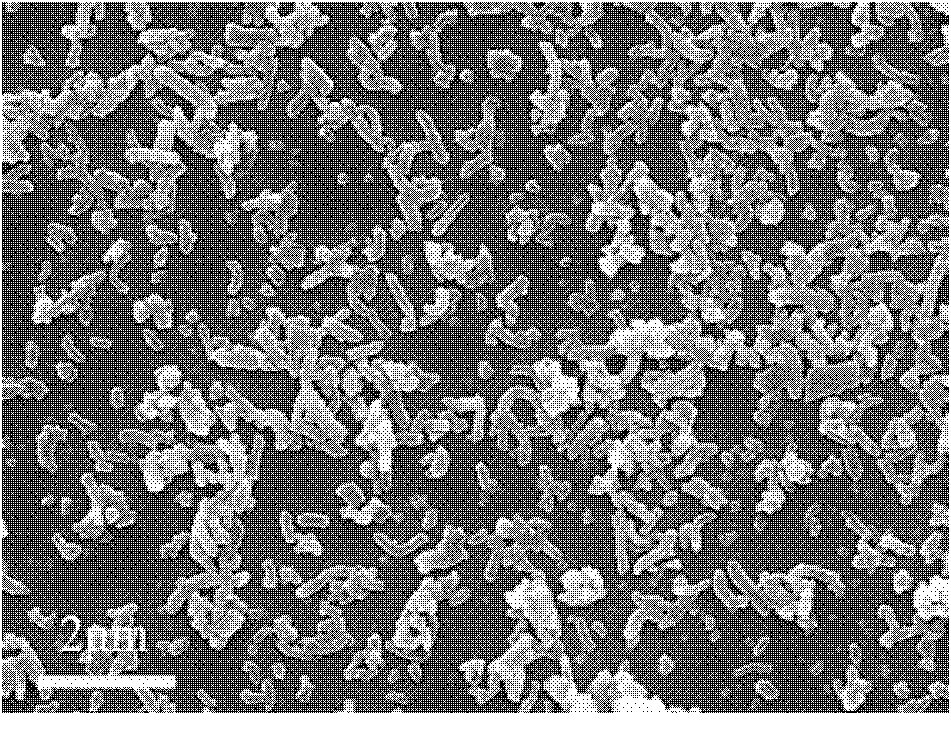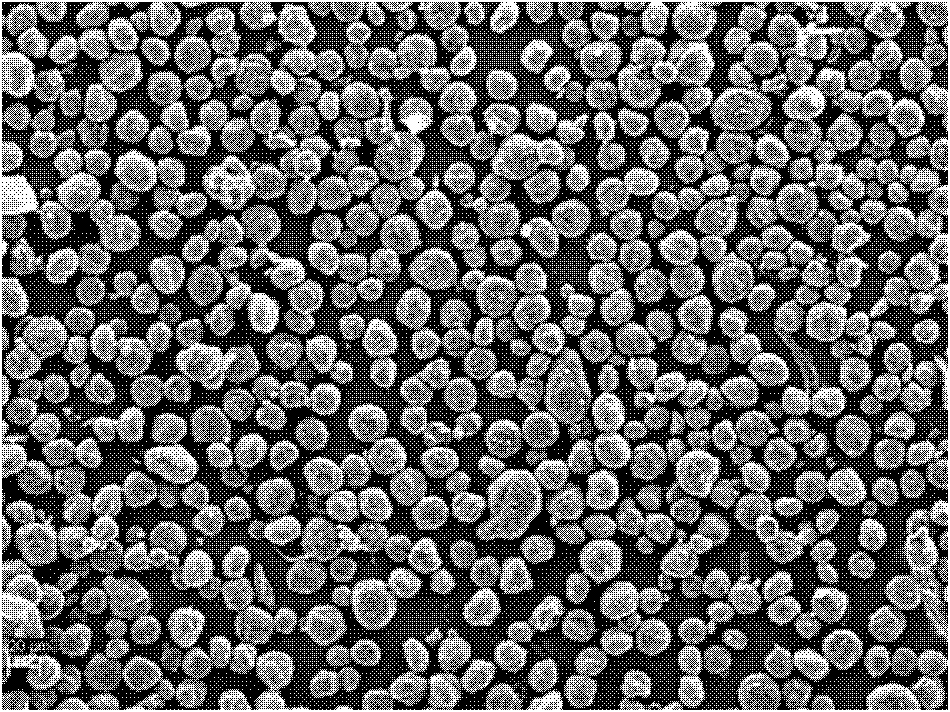Porous silicon/carbon composite material and preparation method thereof
A carbon composite material and composite material technology, used in electrical components, battery electrodes, circuits, etc., can solve the problems of low silicon content and low specific capacity of silicon-carbon composite materials, and achieve high specific capacity, low cost, and high cycle stability. sexual effect
- Summary
- Abstract
- Description
- Claims
- Application Information
AI Technical Summary
Problems solved by technology
Method used
Image
Examples
Embodiment 1
[0026] First configure 120 milliliters of hydrochloric acid with a concentration of 2 mol / L, then add 4 grams of P123 to the configured hydrochloric acid solution, then stir at 40°C for 4 hours, then add 8 grams of tetraethyl orthosilicate dropwise, and continue stirring at 40°C for 12 Hours, then moved to a reaction kettle, kept at 100°C for 36 hours to make it fully hydrolyzed, and after natural cooling, the product was filtered, washed, and dried. Then heat treatment at 550° C. in air for 6 hours to burn off the P123 template to obtain porous rod-shaped silica. Mix and grind 1 gram of the prepared porous silica with 3 grams of magnesium powder, then heat it to 700°C for 3 hours under an argon protective atmosphere to reduce the porous silica, and then wash the product with dilute hydrochloric acid to remove the oxidation in the product. Magnesium and incompletely reacted metal magnesium are subsequently washed with deionized water and dried to obtain porous silicon. Mix 0....
Embodiment 2
[0029] First configure 120 ml of hydrochloric acid with a concentration of 2 mol / L, then add 4 grams of P123 to the configured hydrochloric acid solution, then stir at 40°C for 4 hours, then add 8 grams of tetraethyl orthosilicate dropwise, and continue stirring at 40°C for 24 Hours, then moved to the reaction kettle, kept at 100°C for 24 hours to make it fully hydrolyzed, after natural cooling, the product was filtered, washed and dried. Then heat treatment at 550° C. in air for 6 hours to burn off the P123 template to obtain porous rod-shaped silica. Mix and grind 1 gram of the prepared porous silica and 2 grams of magnesium powder, then heat it at 700°C for 4 hours under an argon protective atmosphere to reduce the porous silica, and then wash the product with dilute hydrochloric acid to remove the oxidation in the product. Magnesium and incompletely reacted metal magnesium are subsequently washed with deionized water and dried to obtain porous silicon. Mix 0.5 gram of pre...
Embodiment 3
[0032] First prepare 120 ml of hydrochloric acid with a concentration of 2 mol / L, then add 4 grams of P123 to the prepared hydrochloric acid solution, then stir at 40°C for 4 hours, then add 8 grams of tetraethyl orthosilicate dropwise, and continue stirring at 40°C for 24 hours , and then moved to a reaction kettle, kept at 100°C for 24 hours to make it fully hydrolyzed, and after natural cooling, the product was filtered, washed, and dried. Then heat treatment at 550° C. in air for 6 hours to burn off the P123 template to obtain porous rod-shaped silica. Mix and grind 1 gram of the prepared porous silica with 2 grams of magnesium powder, then heat at 650°C for 6 hours under an argon protective atmosphere to reduce the porous silica, and then wash the product with dilute hydrochloric acid to remove the oxidation in the product. Magnesium and incompletely reacted metal magnesium are subsequently washed with deionized water and dried to obtain porous silicon. 0.5 g of prepared...
PUM
| Property | Measurement | Unit |
|---|---|---|
| The average particle size | aaaaa | aaaaa |
| Aperture | aaaaa | aaaaa |
| Diameter | aaaaa | aaaaa |
Abstract
Description
Claims
Application Information
 Login to View More
Login to View More - R&D
- Intellectual Property
- Life Sciences
- Materials
- Tech Scout
- Unparalleled Data Quality
- Higher Quality Content
- 60% Fewer Hallucinations
Browse by: Latest US Patents, China's latest patents, Technical Efficacy Thesaurus, Application Domain, Technology Topic, Popular Technical Reports.
© 2025 PatSnap. All rights reserved.Legal|Privacy policy|Modern Slavery Act Transparency Statement|Sitemap|About US| Contact US: help@patsnap.com



